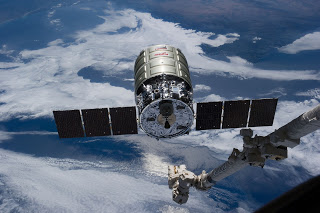NASA to Set Biggest Man-Made Fire in Space


There should be a saying “Never play with fire in Space,” due to the obvious possible hazards astronauts might face in the cold, desolate environment. However, that is exactly what NASA intends to do with their Cygnus cargo spacecraft in its first-of-three Saffire experiments.
“A spacecraft fire is one of the greatest crew safety concerns for NASA and the international space exploration community. Saffire is all about gaining a better understanding of how fire behaves in space so NASA can develop better materials, technologies and procedures to reduce crew risk and increase space flight safety.” Gary Ruff, Project Manager, Saffire. Saffire is a joint-initiative between researchers from 11 government agencies and universities.
“Saffire will be the biggest man-made fire ever in space,” Ruff adds.
Tomorrow (on March 22), NASA’s commercial partner Orbital ATK will proceed with the launch of Cygnus, a cargo spacecraft that will transport food, water and other supplies (including experiments) to the International Space Station (ISS). A particularly interesting experiment with an equally-interesting name is called Saffire-I, or Spacecraft Fire Experiment, and NASA intends to test the effects of fire in a weightless environment such as outer space.
“NASA’s objective is to reduce the risk of long-duration exploration missions, and a spacecraft fire is one of the biggest concerns for NASA and the international space exploration community,” Jason Crusan, Director of Advanced Exploration Systems, NASA.
After stocking up with ISS with its supplies, Cygnus will descend to a lower orbit to ‘ignite’ the experiment. Ground operators in Virginia will set fire to a thin piece of material 3.2 x 1.3 feet in a box full of sensors and other equipment located inside the spacecraft. The fire is estimated to burn in about 15-20 minutes. During the test, sensors will record and measure oxygen, carbon dioxide, temperature, pressure and other key metrics.
“Saffire seeks to answer two questions. Will an upward spreading flame continue to grow or will microgravity limit the size? Secondly, what fabrics and materials will catch fire and how will they burn,” David Urban, Saffire Principal Investigator, explains.
Data derived from the Saffire experiments will be used for future space missions, such as Orion’s planned asteroid mission and NASA’s goal to put humans on the planet Mars.
Fire has been a major issue in space exploration ever since man dreamed of reaching the moon. Apollo 1, set to make history as the first manned Apollo flight, suffered a tragedy as a fire erupted during a pre-flight test killing Gus Grissom, Roger Chafee and Ed White. For the whole story, read – These Disasters Allowed Astronauts to Reach the Moon. Like us on Facebook – www.facebook.com/q3technologies and LinkedIn – www.linkedin.com/company/q3-technologies